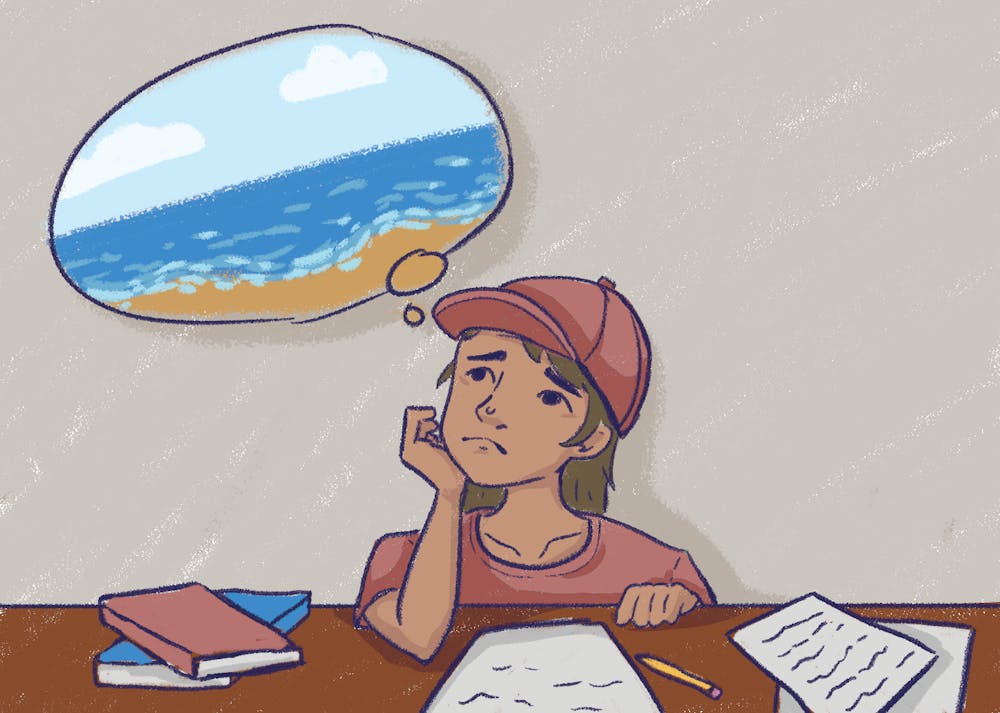When Nov. 1 rolls around, many people associate it with the beginning of the holiday season. But for many college students, November is a dreadful, draining and debilitating month that feels like the opposite of the holiday season. Instead, students see it as the beginning of burnout season.
The term burnout was first used in 1970 by Herbert Freudenberger, an American psychologist. It is defined by the World Health Organization as "a syndrome conceptualized as resulting from chronic workplace stress that has not been successfully managed."
Mental symptoms for general burnout typically include reduced motivation and performance, hopelessness, defeat, self-doubt and a constant feeling of being emotionally drained. Physical symptoms include fatigue, body aches, headaches, and loss of appetite and can even make people more susceptible to colds and the flu.
Carson Lindseth, a law student in his final year, said he defines burnout as "an unwillingness to do the things I have to do." He said it can feel like looking down a long tunnel that does not seem like it's going to end.
College students are in unique positions where they need to balance school, a social life and a home life. After class, they have to worry about homework, extracurriculars, jobs, social activities and housework. Dinner or laundry can seem like small tasks but at the end of a hard day ultimately feel overwhelming.
This heavy load often leads to burnout, which looks different for everyone.
Adam Scarborough, a first-year law student, said he has reached burnout when his reading assignments take longer than normal. Scarborough said burnout affects his sleep quality and his motivation to go to the gym.
Although burnout is difficult to manage, it can be managed before it seems to consume everything.
"Take care of yourself because you're not going to be able to learn if you can't focus on you," said Maci Grannis, a freshman studying community health.
Self-care and management are the key to reversing burnout. Self-care looks different for everyone, it can be taking the time to sit and do nothing, watching a comfort show, napping or even just talking to friends and family.
The first place Lindseth goes to for support is his friends.
"We're all going through the same thing ... so reaching out to them, seeing where they're at, helping each other out where we can and just having non-work time together is great," Lindseth said.
Grannis takes a different approach to support and relies on artistic hobbies to reset her mind. She likes to color, read, make crafts or do aroma therapy when she feels stressed and overwhelmed.
Managing burnout requires the "Three R" approach, according to HelpGuide.org. The first R is recognizing the signs and accepting that burnout has been reached. The second R is reversing the damage by asking for help from others and finding mechanisms to better cope with stress. The final R is resilience; by taking care of physical and emotional health people are less likely to fall into burnout again.
Other preventative measures include better time management techniques. Examples include creating a schedule for tasks, breaking assignments down into smaller chunks and using tools like planners, reminder apps and productivity apps.
Along with time management, setting boundaries to avoid overcommitting whether academically or socially is important. It is hard to turn down opportunities but putting too much on the schedule can quickly lead to burnout.
The final and most important tip is to prioritize sleep, balanced meals and finding some time to exercise. Giving the body all the tools it needs to keep functioning is essential to avoid burnout and recharge physically and mentally.
While school is important, it should not cost students their mental and physical health. If you are feeling burnt out this semester, take a step back and check in with yourself. Remember that you are not alone and that your well-being is more important than a grade.
READ MORE: Counseling services are easier to find than students think
"You always make it through, there is a light at the end of the tunnel, you just got to get there," Lindseth said.
Edited by Senna James, Sophia Ramirez and Natalia Jarrett.
Reach the reporter at nrodri74@asu.edu.
Like The State Press on Facebook and follow @statepress on X.




